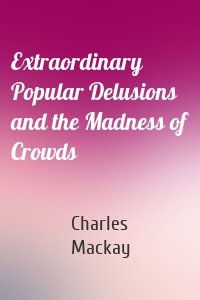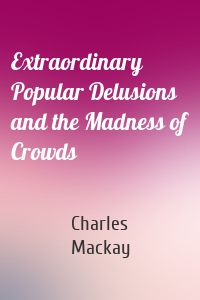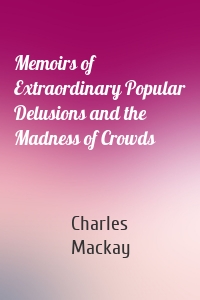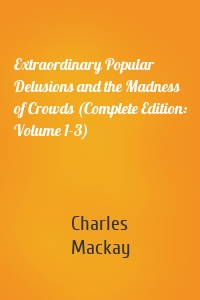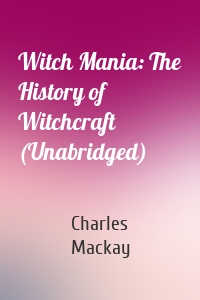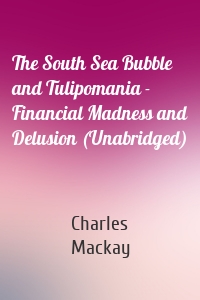Charles Mackay
7 кн.
Memoirs of Extraordinary Popular De...
First published in 1841, this history chronicles the popular foolishness of Mackay's day. It is divided into three broad categories, including 'National Delusions,' 'Peculiar Follies,' and 'Philosophical Delusions.' The author discusses and usually debunks a wide variety of subjects and events. These include economic bubbles like the tulip craze of Holland in 1637 or the Mississippi Company financial bubble of 1719; alchemy, which was of particular interest to...
| Автор | Charles Mackay |
Extraordinary Popular Delusions and...
Extraordinary Popular Delusions and the Madness of Crowds is a study of crowd psychology by Scottish journalist Charles Mackay. The subjects of Mackay's debunking include witchcraft, alchemy, crusades, duels, economic bubbles, fortune-telling, haunted houses, the Drummer of Tedworth, the influence of politics and religion on the shapes of beards and hair, magnetizers (influence of imagination in curing disease), murder through poisoning, prophecies, popular admiration of great thieves,...
| Автор | Charles Mackay |
Witch Mania: The History of Witchcr...
This unabridged chapter, titled Witch Mania, is from Charles Mackay's evergreen work, Popular Delusions and the Madness of Crowds. Published in 1841 it is a stylish and comprehensive dissection of the witch mania which beset much of Europe in the 16th and 17th century. In his easygoing journalistic style Mackay describes in some detail many celebrated outbreaks of this hysteria including the trials of Dr. Fian and Gellie Duncan in Scotland, the progress of Matthew Hopkins through East...
| Автор | Charles Mackay |
The South Sea Bubble and Tulipomani...
These two unabridged chapters from Charles Mackay's two-volume evergreen work, Popular Delusions and the Madness of Crowds (1841) deal with the disastrous South Sea Bubble and the extraordinary outbreak of Tulipomania in Holland. The South Sea Company, a British joint stock company founded in 1711, was granted a monopoly to trade in Spain's South American colonies. In return, the company took on the national debt of England. Speculation in the company's stock led to a great...
| Автор | Charles Mackay |


